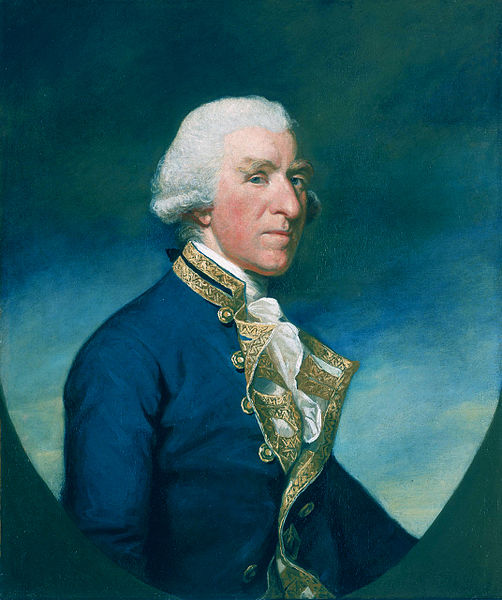Viscount Hood, of Whitley in the County of Warwick, is a title in the Peerage of Great Britain. It was created in 1796 for the famous naval commander Admiral Samuel Hood, 1st Baron Hood. He had already been created a Baronet, of Catherington, in the Baronetage of Great Britain on 20 May 1778, and Baron Hood, of Catherington in the County of Southampton, in the Peerage of Ireland in 1782.
Admiral Samuel Hood, 1st Viscount Hood
Samuel Hood, 1st Viscount Hood
Samuel Hood, 1st Viscount Hood was an admiral in the Royal Navy. As a junior officer he saw action during the War of the Austrian Succession. While in temporary command of Antelope, he drove a French ship ashore in Audierne Bay, and captured two privateers in 1757 during the Seven Years' War. He held senior command as Commander-in-Chief, North American Station and then as Commander-in-Chief, Leeward Islands Station, leading the British fleet to victory at Battle of the Mona Passage in April 1782 during the American Revolutionary War. He went on to be Commander-in-Chief, Portsmouth, then First Naval Lord and, after briefly returning to the Portsmouth command, became Commander-in-Chief, Mediterranean Fleet during the French Revolutionary Wars. His younger brother was Admiral Alexander Hood, 1st Viscount Bridport (1726–1814), and his first cousin once-removed was Admiral Sir Samuel Hood, 1st Baronet (1762–1814).
Portrait of Hood by James Northcote
The Battle of the Chesapeake: the French line (left) and British line (right) do battle
Samuel Hood, 1st Viscount Hood, from the painting by Lemuel Francis Abbott, in the National Portrait Gallery
The Officers Monument, Greenwich Hospital Cemetery




